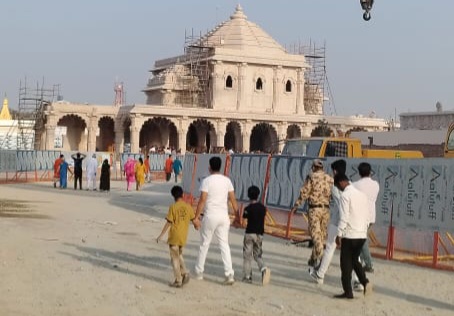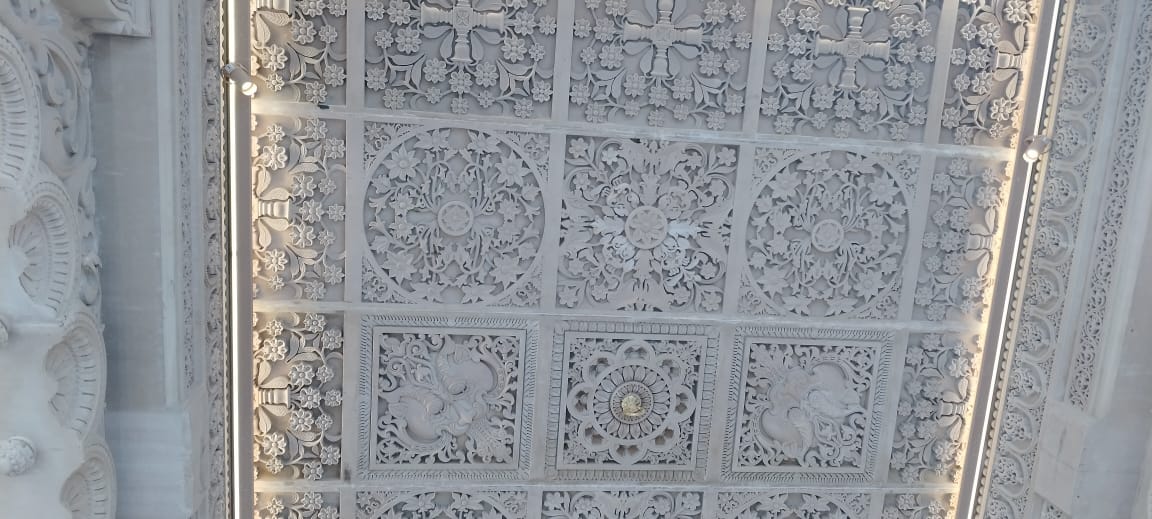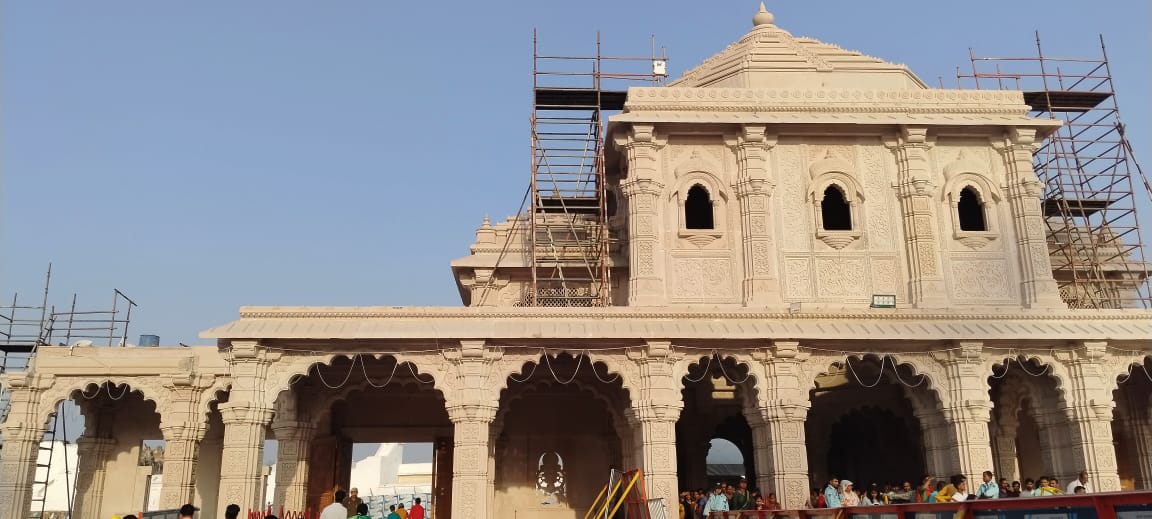


Shri Ram Janmabhumi Mandir
Shri Ram Janmabhoomi Mandir, is a temple complex under
construction in Ayodhya. The site is significant to Hindus as it is the
birthplace of the revered deity Ram, Balak Ram or Ram Lala who is
established as the presiding deity of the new temple which was consecrated
on 22nd January, 2024.
Balak Ram is the primary murti (idol) of Shri Ram
Mandir, built in Nagara style at the Ram Janma bhoomi. The murti (idol)
represents Rama in the form of a small child.
Three Indian sculptors, namely, Ganesh Bhatt, Satyanarayan
Pandey, and Arun Yogiraj, were assigned the task of making the idol of the
deity by the trust. As per the trust, the characteristics of the deity
were supposed to be a 5-year-old Bālaka with a cheerful face
possessing both divine and princely looks.
On both sides of the main idol, Hindu Gods and symbols are
carved on the stone arch. They are 10 avtars of Vishnu, then Hanuman,
Garuda, Swastik, Om, Sudarshan Chakra, Kaumodaki gada, Padma, Brahma, Shiva and
Surya It was informed by the Trust that the Blackstone is water resistant
and non-reacting to the acidic nature of milk when Abhiseka (i.e.
ritualistic holy bath) is done.
The trust has clarified that the 9-inch high Ramlalla Virajman idol which
was placed in the mosque in 1949 will be henceforth used as the utsava mūrti.
The “prana pratistha” i.e. consecration ceremony of the
deity in the sanctum sanctorum of the
Ram Mandir was performed on 22 January 2024.
Since antiquity, it has been a custom to offer and adorn
Hindu deities with precious metals and valuable stones. The Balak Ram Murti
was adorned with 15 kilograms of gold and no less than 18,000 precious stones
such as diamonds, Zambian emeralds, and rubies.
Balak Ram is offered Aarati and Prasad. The trust has
informed that there will be six Aaratis to the Balak Ram daily. They are:
·
Maṅgala
Ārati , to awaken the deity in the morning
·
Śṛiṅgāra
Ārati, after fully decorating the deity
·
Rājabhoga
Ārati, as mid-day royal meals and prepared for a siesta
·
Utthāpan
Ārati to awaken deity from siesta
·
Sandhyā
Ārati, performed during twilight
·
Śayana
Ārati to put the deity to sleep
In Hindu temples, dressing the holy deity is considered as
a form of devotional service known as Vastrālaṅkaraṇa Seva (Dress decoration service) The
deity is dressed on Sunday with pink colored clothes, on Monday with white, on
Tuesday with red, on Wednesday with green, on Thursday with yellow, on Friday
with cream, and on Saturday with blue. On the day of consecration, the
deity was dressed in a yellow dhoti and a red angvastra. The deity
will be dressed in yellow on special occasions.
Ram Mandir was built in the Maru-Gurjara style which is a
sub-style of Nagra architecture of Indian temples that exist in
Northern, Eastern, and Western India. The Temple is still under
construction and will be the third largest upon completion. The Angkor
Wat in Combodia and BAPS Swaminarayan Akshardham in New
Jersy, USA are the largest Hindu temples in the world. As per the modified
design, it shall have three floors with five domes, and the whole complex spans
around 120 acres. The Sikha, main dome shall be 161 feet.









